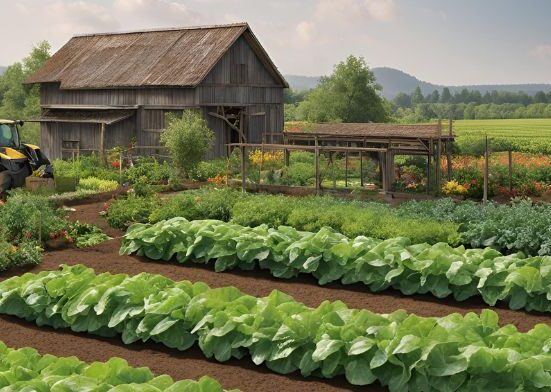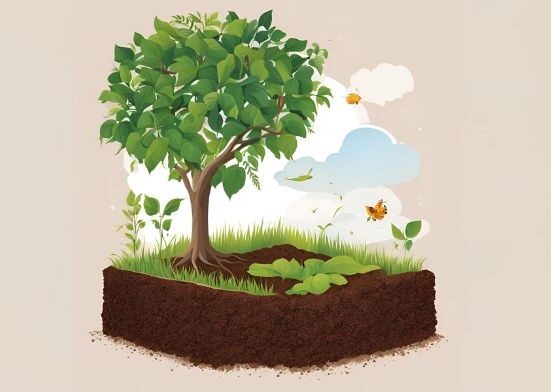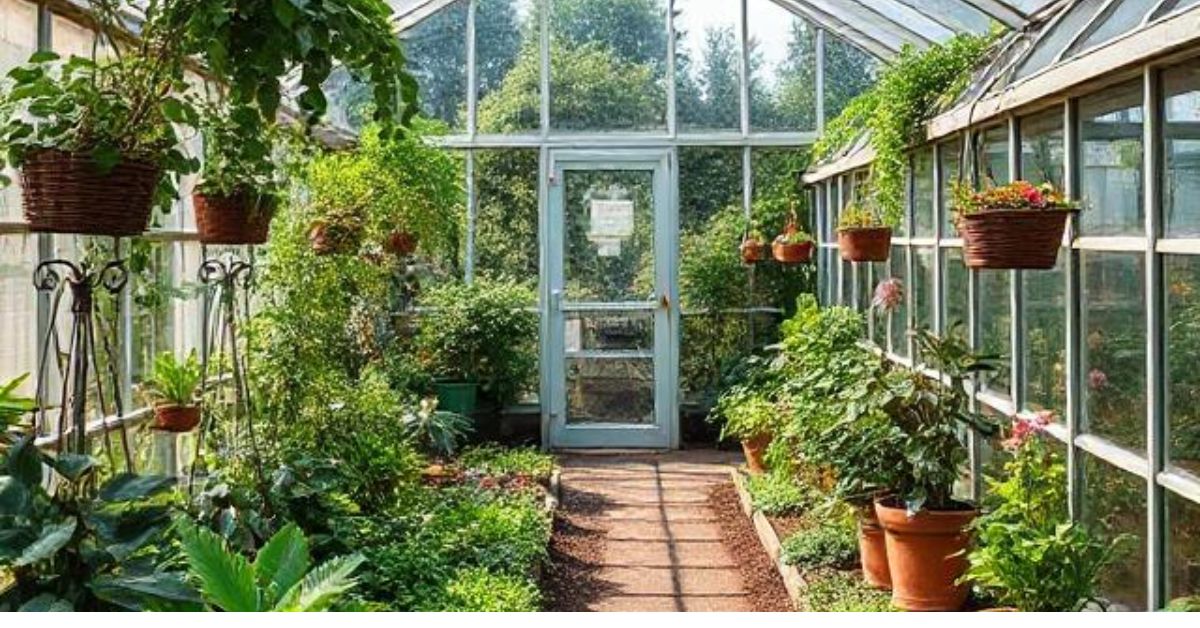Greenhouses, those glass-walled sanctuaries of controlled climates, have become synonymous with modern agriculture and botanical innovation. They allow us to grow tropical fruits in temperate climates, cultivate delicate flowers year-round, and experiment with plants in ways that defy nature’s constraints. But when were greenhouses invented, and how did they evolve into the sophisticated structures we know today? Greenhouses are typically constructed with a combination ofmaterials intended to produce a regulated environment for the growth of plants. The main elements consist of: Frame: Aluminum, steel, or wood. Aluminum is lightweight and rust-resistant, steel is durable for larger structures, and timber is cost-effective but requires maintenance.
Covering: Glass, polycarbonate, or polyethylene plastic. Glass is traditional, offering clarity and durability, but is heavy and expensive. Polycarbonate is lightweight, impact-resistant, and insulates well. Polyethylene is affordable, flexible, and widely used in commercial greenhouses. Foundation: Concrete, gravel, or treated wood for stability and drainage. Ventilation: Fans, vents, or louvers to regulate temperature and humidity. Heating/Cooling Systems: Electric or gas heaters, evaporative coolers, or geothermal systems for climate control. Accessories: Benches, irrigation systems, and shading materials (like shade cloth) for functionality. Modern greenhouses may incorporate smart sensors and automated systems for precision control. Sustainable designs use recycled materials or solar panels to reduce environmental impact. Material choice depends on climate, budget, and purpose.
History of Greenhouses
The history of greenhouses spans centuries, evolving from simple shelters to sophisticated structures. Around 30 CE, Romans used specularia—stone-walled structures with mica or selenite covers—to grow cucumbers year-round for Emperor Tiberius. In the 13th century, Korea’s Joseon Dynasty employed ondol-heated enclosures for winter crops. By the 15th century, Renaissance Italy saw early greenhouses, like Alberto de Bolzano’s 1459 giardino botanico in Padua, for exotic plants. The 16th-century European orangeries, The Fascinating History of the Jack o Lantern such as Versailles’ 1663 structure, protected citrus trees, symbolizing wealth.
The 17th century brought glass advancements in the Netherlands, enabling larger greenhouses. The 19th century, with industrial innovations like iron frames and cheaper Glass, marked the golden age, exemplified by Kew Gardens’ Palm House (1840s). The 20th century saw commercial greenhouses boom, with plastics and automation increasing efficiency. Today, green house history smart greenhouses with AI and sustainable designs, like vertical farms, address climate change and food security, reflecting a legacy of innovation.
The Seeds of an Idea: Ancient Beginnings
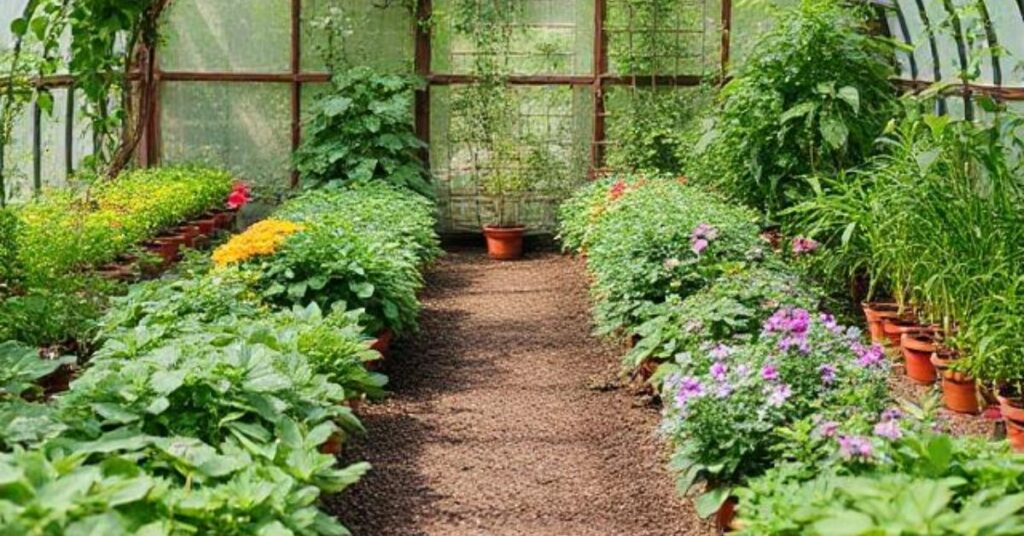
The concept of manipulating environments to nurture plants predates the greenhouse as we know it. As early as 30 CE, the Roman Empire laid the groundwork for controlled agriculture. Roman gardeners, tasked with satisfying the whims of emperors, devised methods to grow exotic plants and produce out-of-season crops. One notable example is the specularium, a rudimentary structure used to cultivate cucumbers year-round for Emperor Tiberius, who reportedly demanded them daily.
These early structures were far from the glasshouses of today. Specularia were built with stone walls and covered with thin sheets of translucent mica or selenite, which allowed some light to penetrate while retaining heat. Fires or heated stones were used to maintain warmth, and the structures were often mobile. Wheeled into sunlight during the day and sheltered at night. While primitive, these efforts mark the first deliberate attempts to create artificial growing environments, setting the stage for the greenhouse’s evolution.The Romans’ ingenuity was driven by necessity and luxury, but their methods were limited by technology. After the fall of the Roman Empire, the knowledge of such structures faded in Europe, define greenhouse preserved only in scattered texts. However, parallel developments emerged elsewhere, particularly in East Asia.
Medieval Innovations: From Korea to Europe
Fast forward to the 13th century, and we find evidence of controlled growing environments in Korea during the Joseon Dynasty. Korean farmers developed ondol systems and underfloor heating to create warm structures for growing vegetables in winter. These early hothouses, often made of wood and paper, were used to cultivate mandarin oranges and other crops in colder climates. While not true greenhouses in the modern sense, they demonstrate a global interest in manipulating growing conditions long before Europe’s greenhouse renaissance.
In Europe, the Middle Ages saw a resurgence of interest in botany, spurred by trade, exploration, and the rediscovery of classical texts. By the 15th century, Italian botanists and scholars were experimenting with ways to protect delicate plants brought back from distant lands. The Renaissance, emphasizing science and discovery, created fertile ground for the greenhouse’s development.One of the earliest documented European greenhouses appeared in 1459, constructed by Alberto de Bolzano in Padua, Italy. This structure, described as a giardino botanico, was designed to house exotic plants collected during trade expeditions. Built with wooden frames and oiled cloth, it relied on sunlight and basic insulation to maintain warmth. While rudimentary, greenhouse history it marked a significant step toward the modern greenhouse, reflecting a growing fascination with controlling nature.
The 16th and 17th Centuries: Orangeries and Botanical Ambition
By the 16th century, Europe’s elite were captivated by exotic plants, particularly citrus trees, symbolizing wealth and sophistication. The need to protect these frost-sensitive plants during harsh winters led to the construction of orangeries, the direct precursors to modern greenhouses. Orangeries were grand, permanent structures, often attached to palaces or estates, with thick stone walls, large south-facing windows, and stoves or fireplaces for heating.The French court of Louis XIV epitomized this trend. The Orangerie at the Palace of Versailles, completed in 1663, was a marvel of architecture and engineering. Spanning over 150 meters, it housed thousands of citrus trees, palms, and other exotic plants. Its design, with massive windows and underfloor heating, Understanding Food Costs and Modern Farming Practices allowed for year-round cultivation, showcasing the Sun King’s wealth and power. Orangeries spread across Europe, from England’s Kew Gardens to Russia’s Winter Palace, becoming symbols of prestige and botanical ambition.
During this period, advancements in glassmaking began to transform these structures. In the Netherlands, a hub of trade and innovation, Glass became more affordable and uniform, enabling the construction of larger, more transparent enclosures. Dutch botanists, such as Carolus Clusius, used these early glasshouses to study and propagate tropical plants, laying the groundwork for modern horticulture. By the late 17th century, the term “greenhouse” emerged, derived from the green-tinted Glass used in these structures.
The 18th Century: Science Meets Horticulture
The 18th century marked a turning point for greenhouses, as the Enlightenment’s emphasis on science and experimentation fueled their development. Botanists and architects began to design greenhouses with greater precision, optimizing light, heat, and ventilation. The Industrial Revolution, with its advancements in iron, Glass, and steam heating, further accelerated this transformation.
In England, the Kew Gardens Palm House, designed by Decimus Burton and Richard Turner in the 1840s, became an icon of this era. Constructed with curved iron frames and thin glass panes. It mimicked the natural habitat of tropical palms, with steam pipes providing consistent heat. The Palm House was not just a functional greenhouse but a public spectacle, drawing visitors eager to see exotic plants from distant colonies.
Meanwhile, in France, the Jardin des Plantes in Paris housed greenhouses that served as living laboratories for botanists like Antoine-Laurent de Jussieu. These structures were designed to replicate specific climates, from arid deserts to humid jungles. What are the Easiest Most Profitable Crops to Grow enabling scientists to study plant physiology and adaptation. The greenhouse had evolved from a luxury for the elite to a tool for scientific discovery.
The 19th Century: The Golden Age of Greenhouses
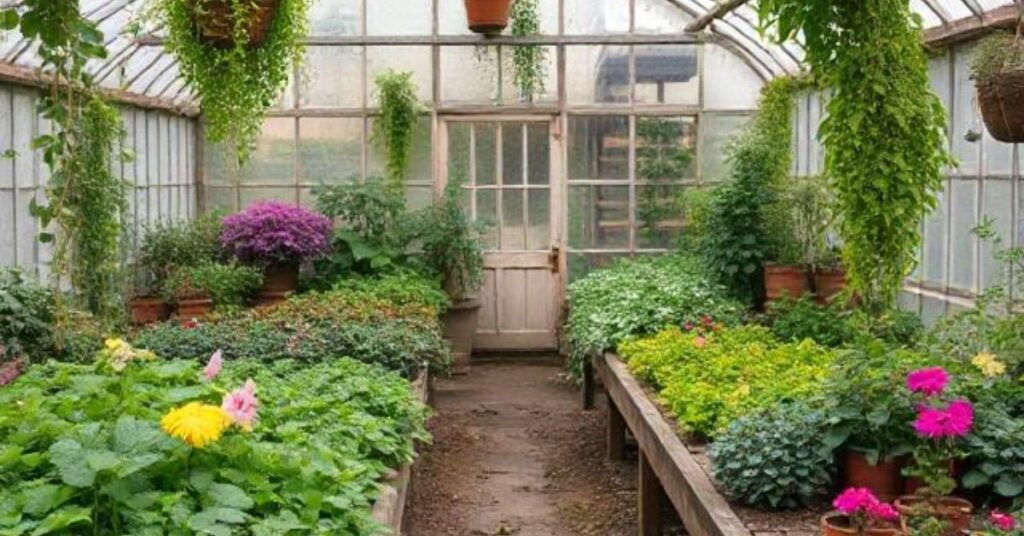
The 19th century is often considered the golden age of greenhouses, driven by technological innovation and imperial ambition.The Crystal Palace was constructed for London’s Great Exhibition in 1851. was a monumental glass structure that, while not a greenhouse in the traditional sense, showcased the potential of Glass and iron architecture. Designed by Joseph Paxton, a former gardener, the Crystal Palace inspired a wave of greenhouse construction across Europe and North America.
Paxton’s earlier work, the Great Conservatory at Chatsworth House (1836–1840), was an actual greenhouse, housing tropical plants in a massive glass structure heated by eight underground boilers. Its design influenced greenhouses worldwide, from the New York Crystal Palace to the Sydney Botanic Gardens. These structures were functional and cultural landmarks, reflecting humanity’s desire to conquer nature.
Thanks to the repeal of the British Glass Tax in 1845, the democratization of glass production made greenhouses more accessible. Smaller, prefabricated greenhouses became available to the middle class, leading to a boom in amateur gardening. What Is Agriculture A Simple Guide for Everyone Companies like Wardian Cases and portable mini-greenhouses allowed plant collectors to transport specimens across oceans, further fueling global botanical exchange.
The 20th Century: Greenhouses Go Commercial
The 20th century saw greenhouses transition from ornamental and scientific structures to commercial powerhouses. The rise of industrial agriculture demanded efficient, large-scale production, and greenhouses met this need. In the Netherlands, the Westland region became a global leader in greenhouse farming. Using advanced techniques like hydroponics and automated climate control to grow vegetables and flowers year-round.
Technological advancements, such as double-glazed Glass, plastic sheeting, and computerized systems, made greenhouses more energy-efficient and productive. By the 1980s, greenhouses covered millions of hectares worldwide, producing everything from tomatoes to tulips. In regions like Almería, Spain, vast “seas of plastic”history of greenhouses transformed arid landscapes into agricultural hubs, feeding global markets.
Greenhouses also played a role in scientific research. Biosphere 2, constructed in Arizona in the 1980s, was an ambitious experiment in closed ecological systems, using greenhouse-like structures to simulate Earth’s biomes. While not a commercial success, it highlighted the greenhouse’s potential in studying sustainability and climate change.
The 21st Century: Sustainability and Innovation
Today, greenhouses are at the forefront of sustainable agriculture. With climate change threatening traditional farming, greenhouses offer a controlled, resilient alternative. Vertical greenhouses, such as those in Singapore and Japan, maximize space in urban areas, using LED lighting and hydroponics to grow crops efficiently. Solar-powered greenhouses and geothermal heating systems reduce environmental impact, aligning with global sustainability goals.
Innovations like smart greenhouses, equipped with IoT sensors and AI, allow farmers to monitor and adjust conditions in real time. Solar-powered desalination greenhouses in desert regions like the UAE produce fresh water and crops simultaneously, addressing food and water scarcity. Meanwhile, community greenhouses in cities like Detroit and London foster local food production and education.
The aesthetic appeal of greenhouses persists, too. Modern architects draw inspiration from Victorian glasshouses, creating eco-friendly homes and public spaces with transparent walls and lush interiors. The greenhouse has come full circle, blending utility, science, and beauty.
Cultural Significance: More Than Just Glass
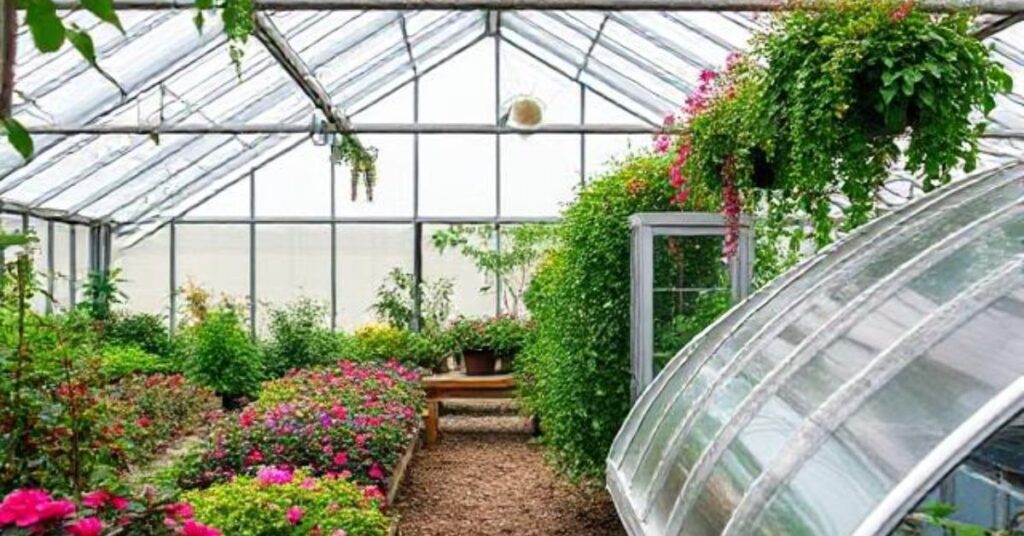
Beyond their practical applications, greenhouses hold a unique place in culture. In literature, they symbolize control over nature, as seen in John Steinbeck’s The Chrysanthemums, where a greenhouse reflects the protagonist’s constrained ambitions. In film, greenhouses often represent hidden worlds, from the magical conservatory in Harry Potter to the dystopian domes of Silent Running.
Greenhouses also embody humanity’s relationship with the environment. They reflect our desire to nurture and protect life and our impulse to dominate nature. As we face ecological challenges, greenhouses offer a paradox: they shield plants from a changing climate while consuming resources. This tension drives ongoing innovation, facts about greenhouses as scientists and farmers seek to make greenhouses more sustainable.
Conclusion
From Roman speculum to AI-powered vertical farms, the greenhouse’s history is adaptation and ingenuity. Its invention cannot be pinned to a single moment but rather to a series of milestones across centuries and cultures. Each era—Roman, Renaissance, Victorian, and modern—added new layers to the greenhouse’s story, transforming it from a luxury to a necessity.
As we look to the future, Modern Commercial Agriculture greenhouses will likely play a central role in feeding a growing population and combating climate change. They remind us that, with creativity and persistence, we can cultivate life in the most unlikely places. The greenhouse is more than a structure; it’s a testament to human curiosity, resilience, and the enduring bond between people and plants.
FAQ
When were greenhouses first invented?
Greenhouses were first invented by the ancient Romans around 30 AD. They used structures with translucent materials to grow cucumbers for Emperor Tiberius, creating early versions of controlled growing environments.
Who is credited with the first greenhouse design?
Although ancient Romans used primitive greenhouses. The modern greenhouse concept is credited to French botanist Jules Charles in the 16th century. His glass structures helped cultivate plants in cooler climates, influencing today’s greenhouse designs.
What materials were used in early greenhouses?
Before Glass became common, early greenhouses used materials like mica, oiled cloth, and thin translucent stone. By the 17th century, glasshouses became popular in Europe for growing exotic plants and protecting crops year-round.
Why were greenhouses important in history?
Greenhouses allowed the cultivation of plants outside their natural climate zones. In the 17th and 18th centuries, European nobility used them to grow tropical fruits like pineapples, demonstrating wealth and scientific curiosity.
How have greenhouses evolved over time?
Greenhouses have evolved from simple sunlit shelters to advanced structures with automated climate control. Today, they support commercial farming, research, and sustainable agriculture, enabling year-round crop production in diverse global conditions.



